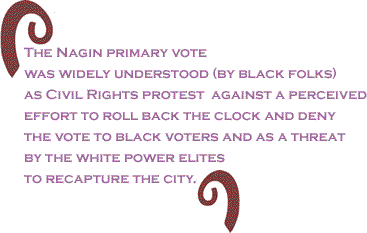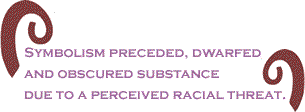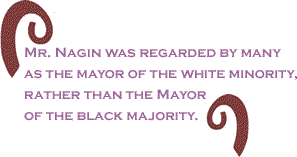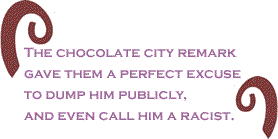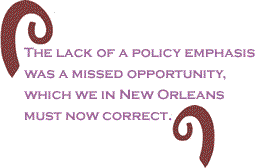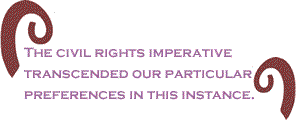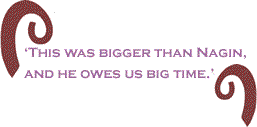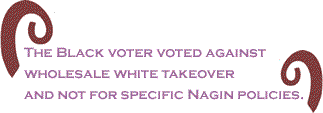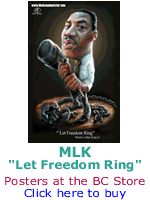
|
|||||||||||||||||||||
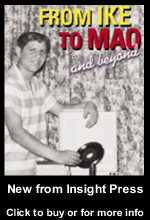 |
|||||||||||||||||||||
 |
|||||||||||||||||||||
 |
|||||||||||||||||||||
 |
|
Introduction and Background: In a remarkable turn in his political fortune, C. Ray Nagin, the troubled and often controversial Mayor of New Orleans, topped the ticket in the April 22nd primary and went on to win the May 20th runoff to become Mayor of the city. In both instances, he won with the overwhelming support of the Black electorate, many of whom viewed the election as a Civil Rights protest that transcended particular candidates and issues. In the primary, Mr. Nagin garnered 66% of the black vote to lead the field, and in the runoff, he garnered about 80 % of the black vote and 20 % of the white vote (primarily conservative ) to win re-election.. Four years ago the situation was reversed in which white voters elected Mr. Nagin with 85% of their vote, coupled with 35% of the black vote. The fundamental question now being asked is which mayor will Nagin be this time around: the mayor of the black majority that elected him in 2006, or the mayor of the white minority that elected him in 2002. Astute voters and political analysts now ask what does his re-election portend for the black community given his past policy support of the uptown and business elite agenda. Black voters reelected Nagin to defeat the overt effort of the white elites to politically recapture the city given the dispersion of the majority black population to 47 different states. The black voters did so without an explicit agreement on a broad agenda, and without certainty that Mr. Nagin would support Black-oriented or equitable policies to reconstruct the city. Symbolism preceded, dwarfed and obscured substance due to a perceived racial threat. However, now that the voters have decided who they prefer to be mayor, citizens are now asking and exploring what they want the mayor to do. The Pre-Katrina Political Mood and Context It is important to understand the political psychology of black voters before and after Katrina. During Mr. Nagin’s 3 and ½ years in office prior to Katrina, there was a widely held perception in the Black community that white elites were trying to recapture the city; and that Ray Nagin was their instrument to accomplish such an objective. After all, he was elected by the minority white population in a coalition with higher income black residents. His policy orientation often appeared to support white interests, and or higher income interests. 62% of black Orleanean households earned less than $25,000 per year, with poverty rates as high as 35 to 40 % in some neighborhoods. All social indicators describe a New Orleans deeply plagued with poor education, high drop out rates, poverty, low wages and a diminished quality of life. This black community did not vote for Mr. Nagin in 2002, and it has never perceived him as its mayor. The socio-economic conditions of vast numbers of African-Americans can only be described as disastrous. A serious and broad social movement was fully emerging prior to Katrina that included issues such as: police brutality/misconduct, the schools, the residency [police] rule, social and economic inequality, gentrification and displacement, youth futures, jobs, a public housing crisis, cultural equity and many other issues. The black community of New Orleans was increasingly divided by race and class and the further marginalization of the black middle class as well. Mr. Nagin was regarded by many as the mayor of the white minority, rather than the mayor of the black majority. Active discussion was taking place among influential Black leaders and organizations regarding who would run against him to unseat him. His on the on-the-job experiment proved to be a disaster for much of black New Orleans. Rumor has it that many of his former uptown crowd had deserted him and were searching for an alternative.
Usher in the Katrina storm and Mr. Nagin’s mixed performance, and the desire for regime change began in earnest. However, the politics of replacement were rendered secondary by multiple difficulties such as displacement /relocation challenges, day to day survival problems, election postponements, legal challenges and threats to totally disenfranchise Black voters who were dispersed among 47 states in the U.S. Whatever Nagin’s shortcomings, there was an emerging sense that that black people were under attack by those in the white power structure in New Orleans, Baton Rouge and Washington D.C. The final indicator of a possible takeover threat was the sheer number of candidates seeking the Mayor’s office: 23 in all, including 5 “major” white candidates and only 1 serious Black candidate, the Rev. Tom Watson. This apparent level of white interest had never been witnessed since the office was won by Dutch Morial in 1978. Such a lesson in history did not go unnoticed by Black voters. These emotions were building for some time and were heigthened by the April march that crystallized everything as a “Civil Rights/Black Power” challenge that threatened the very survival of New Orleans as a black city. Of course Nagin’s awkward “chocolate city” comment also had its effect: it reminded Black folks that the city had been Black for a long time, and now others were trying to turn it vanilla. The effect was profound. Black folks knew that he was being patronizing, but cheered because he stated the obvious albeit too little too late. White folks were angry and uniformly berated Nagin’s comments as pandering. Many whites had already deserted him as incompetent and impetuous and the chocolate city remark gave them a perfect excuse to dump him publicly, and even call him a racist. Katrina exposed what everyone already knew: New Orleans was a social disaster that Katrina simply exposed for the world to see. It further exposed what Orleaneans also knew: Mr. Nagin was an unpredictable politician whose policy direction was questionable by blacks and whose personality was troubling to many whites.
.It was that “chocolate city” comment that signaled Nagin’s acceptance of the loss of his white base, and his strategic move to capture the black base. He drew the line in the sand and reminded black folks that they were the majority and should remain so; thus launching his re-election as the advocate for black folks: an emerging Civil Rights and Black Power symbol. It worked. The Primary Race: Sorting Things Out For many black citizens, the shape of the April 22nd primary election had been defined by three distinct variables: 1) the potential disenfranchisement of thousands of voters who were dispersed between 47 states throughout the U.S. 2) the constant rumors on the number of “significant” white candidates who may run and the possibility of at least 1 significant black candidate, and 3) the crystallization of black opinion through black forums and a National civil rights march. As is turned out, 110,000 (38%) of 293,000 registered voters cast ballots for mayor, 57,000 of whom were African-American ( 53%) with the remaining 53,000 voters being white and other. The black turnout equaled 31% of the total of 188,000 black registered voters; whereas the white turnout was 44% of the total of 98,000 registered white voters. The march held on April 1st was a critical turning point in defining what the election was all about, as 10,000 marchers proclaimed their support and solidarity with the voting rights of displaced and returned New Orleaneans. In classic Civil Rights fashion, New Orleans became the new Selma (bridge included) – the place to make a stand against systemic injustice, poverty and racism so evident in the Superdome fiasco. The march was supported by all of the major Civil Rights organizations and their leadership such as Rev. Jesse Jackson of RAINBOW/PUSH, Marc Morial of the National Urban League, Bruce Gordon of the NAACP, Rev. Al Sharpton of NAN, Harry Belafonte, Bill Cosby, Sybil Taylor of the AFL-CIO, the Millions More Movement and a host of other national, state and local leaders. There was a policy component of the march based on HR 4197 (the CBC’s bill). However, policy was subsumed by the passion of the moment, which focused primarily on the issue of voting rights.
Thus, despite himself, Ray Nagin emerged as the embattled symbol of the “Battle for New Orleans.” Unfortunately, he did so without having to offer a clear, and well developed agenda to bring black folks home and to rebuild the city in a just and equitable manner that would include ALL neighborhoods. For all the good that the national march did achieve, the lack of a policy emphasis was a missed opportunity, which we in New Orleans must now correct. The total primary vote included 21,000 early and absentee voters. Mr. Nagin received 38% or 41,495 votes to finish 1st, followed by Lt. Governor Mitch Landrieu who captured 29% or 31,490 votes to finish 2nd. The major white candidates Ron Forman finished 3rd with 17%, the Republican Rob Couhig finished 4th with 10%, followed by Virginia Boulet with 2 %.
The progressive Black candidate Rev. Tom Watson finished
a distant 6th with only 1 % of the vote. Although he was included
in the major debates and was dubbed as being in the “magnificent
7” (5 white plus Watson and Nagin), the Watson message was constantly
marginalized by the media by Runoff Dynamics in Black and White The history of Black white mayoral runoffs in New Orleans suggests that to win, a candidate’s victory hinges on their ability to capture at least 80% of the Black vote, and at least 20% of the white vote. To many citizen and political observers, this appeared to be a daunting challenge given that Mr. Landrieu captured 24% of the black vote in the primary, and that Mr. Nagin captured only about 6% of the white vote. In the primary election, Mr. Nagin and Mr. Landrieu faced each other in a runoff on May 20th, which was won by Mr. Nagin with 52% of the vote to Mr. Landrieu’s 48%. There are multiple explanations for Mr. Nagin’s victory, each of which served to expand his base in the black and white community. After the primary, Mr. Nagin captured the endorsement of Rob Couhig, the white Republican, and Virginia Boulet, the white liberal Democrat. Perhaps in the biggest coup of the election season, he surprisingly won the endorsement of Rev. Tom Watson, a strident critic and primary candidate who referred to Mr. Nagin as a “double minded liar” during a televised primary debate. As is the historical tendency of politics to make strange bedfellows, Rev.Watson endorsed Mr. Nagin as a matter of justice and fairness, transcending who the candidate was. That sent a message to many undecided and vacillating black voters that the civil rights imperative transcended our particular preferences in this instance. To his credit, Rev. Watson also asserted his view that the Agenda must be at the center of black support for Mr. Nagin, although the details of such an Agenda had not been thoroughly formulated. Translated, that meant that retaining the office in the hands of the black majority was consistent with good democracy, and more important than the policies or personality deficits of Mr. Nagin. The Watson endorsement confused many of his supporters who preferred that he remain neutral, rather than endorse either candidate given his political dislike of both Mr. Nagin and Mr. Landrieu. Earlier, Landrieu won the endorsement of Bishop Paul Morton, the prominent leader of the largest African-American congregation in the city and a colleague of the Rev. Tom Watson. Both of them had roundly criticized Mr. Nagin two years earlier for his insensitivity to Black issues. Bishop Morton was pointed in his accusation that Mr. Nagin was a “white man in black skin.” who lamented the absence of a Black man in the runoff who he could support.
In the week prior to the election, pollsters and pundits had all but declared Landrieu the victor, noting that the race was his to loose. The Times Picayune (the white daily) and the Louisiana Weekly (the black weekly) both endorsed Landrieu lending to the perception that he had forged a formidable biracial coalition that was likely to prevail. Of course, as has been pointed out by this writer, the polls are not to be believed in the era of Katrina. Of course Mr. Landrieu’s campaign failed to offer voters a reason to shift their allegiance to his candidacy. Sure enough, just as Mr. Nagin surprised the pollsters and the pundits in the primary, he also shocked them in the runoff by capturing about 80% of the Black vote, and about 20% of the white vote. About 113,000 votes were cast in the runoff, which was about 3,500 votes higher than the primary. Of this total 25,000 were early voting and absentees compared to 21,000 during the primary. Nagin received 59,460 votes or 52%, to Landrieu’s 54,131 or 48% of the total. More importantly, Nagin received about 80 % of all Black votes cast to Landrieu’s 20%. Thus, in both the primary and the final election, Nagin won because of the overwhelming support of the Black electorate. While it is true that 20% of the black and white electorate were swing voters (they voted across race lines), it was the Black base that elected Nagin. Four years ago, the white based gave him 80% of their votes and thus elected him; whereas in 2006, the Black base produced the same 80 % result and elected him. Make no mistake, without this level of Black support, even with the 20% white crossover vote, Nagin would not have won. A 10% shift in the Black vote would have elected Landrieu. Thus, Nagin owes his election to Black voters. Black Political Power Remained Intact Thus on Election Day April 22nd, and again on May 20th we witnessed the first modern political blacklash that was widely felt across the board in the city. Black voters acted on their racial interests, despite specific views on a given office, or candidates or issues. This Katrina election evolved into a referendum on race, even with evidence of important crossover voting. It was a rejection of a perceived takeover or white political coup d’etat. As stated by a voter to this writer, “we worked too hard to just let them take it back,” and by another voter, “this was bigger than Nagin, and he owes us big time.” Virtually every black officeholder or candidate faced one or more white challengers or a white sponsored black challenger for the first time in modern memory. Black candidates for office won virtually every position they ran for, with only one loss: Council District B, which was however off set by the winning of Council District C in Algiers. Thus Black candidates retained all 12 of the political offices they previously held or that they newly sought. This included: 1) the Civil and Criminal Sheriff’s office 2) the Clerks of Criminal and Civil District Court 3) 4 City Council seats 5) all 3 of the Assessor seats previously held and finally the Mayor’s office.
This was an impressive display of Black political sophistication and maturity given the attack on Black voting rights ushered in by Katrina’s dispersal of Black voters and the difficulty black voters encountered in casting their ballots. Many had to travel to one of 10 satellite locations or back to New Orleans, while others had to learn the complexities of absentee voting for the first time. A Second Nagin Regime: Beyond the Civil Rights Response During his first 4 years, Mr. Nagin’s policy orientation was no doubt tilted towards the interests of white business and white residents; a classic “trickle down” approach. The 2006 election results argue for a decided shift in his policy orientation towards the interests of Black residents; otherwise, the city could become ungovernable. The principal issue is whether or not the election represents a mandate to govern from the left, the right or the middle. Alternatively, it could be characterized as simply a response to perceived racial threat, without a specific policy orientation other than “whatever is in the interests of Black residents.” Clearly, Black voters concluded that the white elites should not be allowed to politically re-capture the city, and that although black folks may differ with Nagin in important ways, returning him to office served a broader racial interest and Civil Rights agenda. However, it is not to be assumed that a 2nd Nagin regime will necessarily be sensitive to his newly found political base. His political instincts will continue to be responsive to the perspective of the white elites in the city, rather than his “new” Black electoral constituency unless black voters force the shift.
A recent interview with the local media suggests that the business community and other white power elites will certainly compete for adoption of their agenda, and that black voters must organize themselves to advance their political interests as well. It is not to be assumed that a Black-oriented agenda will automatically result from the electoral outcome. The personnel and policy orientation of a 2nd administration should be of keen interest to Black and white residents, as well as the involvement of new advisors and strategists on the team. The old boy white network should not be accorded majority or privileged status on boards, commissions and decision-making structures in this term. Nagin’s “new” black constituency must be at the center of the discussion of personnel, policy and resource allocation. There must be an unambiguous message and appropriate follow up on the pledge to get our people home with affordable neighborhoods, good schools, adequate health care, electricity, phones, safe levees and all other requirements for a decent quality of life. Nagin must exert leadership in helping black Orleaneans to build wealth, and benefit from the reconstruction and rebuilding of the city as required by the recently adopted neighborhood Rebuilding Ordinance. Groups like his rebuilding commission should be allowed to phase out and be replaced by demographically representative planning and advisory entities. Mr. Nagin must consult with the city council and his black constituency prior to making important decisions. The Challenge to Black Politics Some citizens have contended that regardless of who won, the needs and interests of the Black community, especially its displaced residents, remains the same, and that an ongoing social movement is necessary to advance those interests. If Mr. Landrieu would have won, this imperative would be necessary because the Black vote would have been a minority of his base. Because Mr.Nagin won, such a movement is urgently needed to insure his accountability to an agenda of interests to the black voters. Black voters did not give him a mandate to be a dictator or imperial mayor. Quite the contrary, the Black voter voted against wholesale white takeover and not for specific Nagin policies. Most people who voted for Mr. Nagin cannot articulate exactly what his policy positions are other than that he was black. This writer conducted informal surveys and inquiries with a cross section of voters from different sections of the city which suggest that race mattered more than policy. Most voters probably could not indicate exactly what Mr. Nagin stands for, or exactly what they expect of him other than to protect black folks interests which is what Black voters expect from any black Mayor. They all are confronted with a policy choice that is growth-corporate or one that is growth-distributive. The voters must move Mr. Nagin from his first term corporate approach to a second term distributive approach as New Orleans is re-built.
It is this vague interaction between race and policy that necessitates a gathering of all forces to diagnose, analyze and define the African-American Agenda during Mr. Nagin’s 2nd regime. Those who supported Mr. Nagin, those who supported Mr. Landrieu, and those who did not support either of them should convene in a “Policy Summit” to produce a short-medium and long-term policy Agenda for the Reconstruction of the City. If Mr. Nagin is not held responsible and accountable, symbolism will triumph over substance and we will be exploited by self-serving politics once again. The African-American Leadership Project (AALP) is convening a summit on June 10th at the ASHE Cultural Arts Center in New Orleans to explore these problems. We all wish Mr. Nagin well, but history tells us that we must be vigilant in organizing for the interests of our people and for all citizens who need the help of government. After all, the same would be required if Mr. Landrieu or Rev. Watson would have won. Re-building a democratic, just, equitable and sustainable New Orleans is the challenge for all progressive politics in the future. Race may be necessary, but is not always sufficient to accomplish such a historically challenging objective. That is the lesson of the Katrina election. Mtangulizi Sanyika is the Project Manager of the AALP of New Orleans, and served as a political analyst for the National Coalition for Black Civic Participation during the recent New Orleans elections. He is a veteran Civil Rights/Black Power activist, a planner, policy analyst and organizational management specialist who has previously taught at Harvard, MIT, Brown, U. Mass., CAL-Berkeley and Dillard University. He can be reached at 504-242-8353. |
|
| Home | |
Your comments are always welcome. Visit the Contact Us page to send e-Mail or Feedback or Click here to send e-Mail to [email protected] e-Mail re-print notice
If you send us an e-Mail message we may publish all or part of it, unless you tell us it is not for publication. You may also request that we withhold your name. Thank you very much for your readership. |
|
| June 1, 2006 Issue 186 |
||||||||||||||
|
||||||||||||||
|
||||||||||||||
| Printer Friendly Version in resizeable plain text format | ||||||||||||||
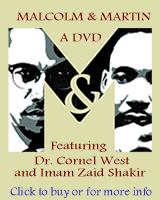 |
||||||||||||||
 |
||||||||||||||
 |
||||||||||||||
 |
||||||||||||||
| |
||||||||||||||
| |
||||||||||||||





















